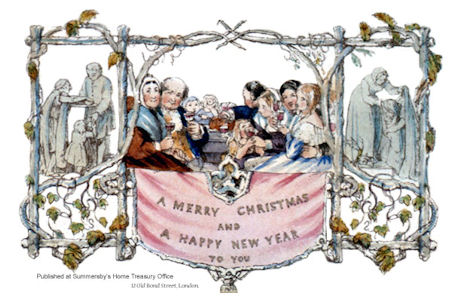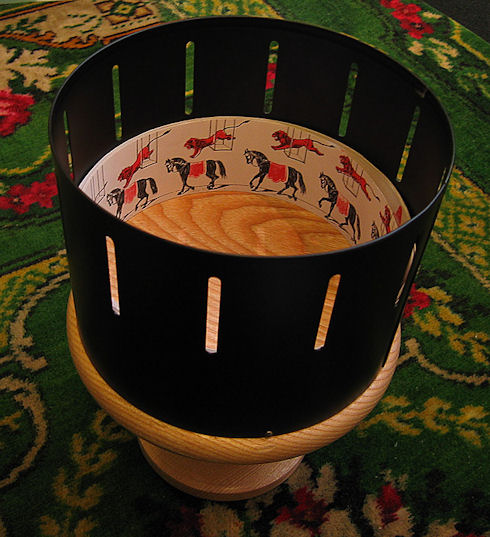With Christmas upon us, reflect if you will on how the greatest pleasure can result from the simplest of gifts. Babies, and children below the age of two, invariably delight more in a present’s packaging than its content; and things don’t improve much with age.

Nor do value and satisfaction correlate (value is in any case an alien concept to many children). A wind-up torch at £20 is of moderate interest to my young nephew; but far more engaging is the squishy polythene tube, filled with a shimmering emulsion and impossible to hold, at £1.50.
Unsurprisingly, you won’t be hearing any appeals for simplicity from the toy industry. If Amazon UK’s Top 10 toy list is anything to go by, it’s going to be a Christmas in front of the monitor for many households. Six of the ten favorites are either game console or game related, three are iPoddy things, and, worryingly for a nation already rushing to obesity, the number five slot is taken by a chocolate fountain. Also selling well are various robotic animals, Wall-E related goods, and the ubiquitous Guitar Hero.
That’s a pretty technological Christmas then. How did people ever get by without all this stuff? Cue the nineteenth century Christmas……
Transistors, integrated circuits, and laser technology were absent from the Victorian toy maker’s toolkit; but in the latter half of the nineteenth century, science and technology based toys and ‘fancy goods’ were, as today, a staple draw for vendors at Christmas time. They appeared in the special seasonal catalogues of vendors with names we have long forgotten: Theobald & Co. of Kensington, Shoolbred & Co on the Tottenham Court Road, Parkins & Gotto of Oxford Street, and the Economic Electrical Supply Company on the Edgeware Road. More familiar, and still to be found on Regent Street today, is Hamley’s – then ‘Hamley’s Model Doll and Toy Warehouse’ . With roots going back to 1760 Holborn, the firm was well established by1849, when a Henry Charles Harrod opened a small grocery store in London’s Knightsbridge district.
Animatronics were the rage in the 1880’s. Customers to Parkins & Gotto, if sufficiently motivated by the mechanised smoking fisherman that greeted them at the entrance, could take away their own mechanical wonder in the form of an elephant, capable of walking with children on its back; theirs for £20. Hamley’s also offered animated animals and birds, some with sound effects; and a mechanical fish that could swim in water. One of the more complex devices involved a clockwork polar bear chasing a sailor up a ladder, with another sailor fighting ‘the brute’ off (indulge in a modern vision with Palin and McCain substituting for the sailors). Theobald’s offered an electrified clock case that gave a shock when opened. Toys based on optical effects were popular, like the zeotrope, that relied on persistance of vision to give the impression of continuous moving images; and the Rainbow Bubble, a demonstration of Newton’s Rings between soap bubbles.

Indoor fireworks, indeed fireworks in general, were a popular Christmas treat. Pharaoh’s Serpents, known to us perhaps as ‘snakes in the grass’, ejected copious combustion products in the form of sinuous worms. Mid-nineteenth century health and safety pundits, popularly perceived as lax by today’s standards, warned of the toy’s perilous main ingredient – hydrated mercuric sulpho-cyanide. We might note, with some irony given how global trade later developed, one contemporary journalist’s observation that: “this plaything has had its day in this country, although the number sent to China and Japan is said to be enormous.” How we chuckled.
Other firey stocking fillers of the Victorian age, guaranteed to turn any modern health & safety inspector apoplectic, included Flash Paper – a commercial spin-off of Schonbein’s recent invention of Gun Cotton. Big deal, flash paper is available today; but not so Crocodiles Tears or Larmes de Diable – which produced a beautiful light show when thrown into water; what else from beads of potassium metal in a water soluble coating.
Magic Photographs were another entertaining Christmas novelty. Popular in the 1880’s, these were featureless white papers yielding an image when moistened with water. Made by treating silver images that had been developed, fixed, but not toned, with mercury bichloride, an invisible image of white silver chloride on white mercury chloride was produced. The image could be revived by soaking the paper, which included a backing sheet impregnated with sodium hyposulphite, in ordinary water – magic!
And finally – as today, toys were seen as educational; but, perhaps anticipating the worries today’s parents feel when their kids pull away from them in matters digital, there were concerns. This quote, from an 1866 edition of the Lancet, comments on the educational value of toys, while playfully alluding to the danger that an over-inquiring mind might present to the establishment:
“If the word “science” mean that which is known, and if the term “knowledge” indicate that which is demonstrated and understood, then a child who comprehends the true story of any half dozen of the new scientific toys would be a serious antagonist to tackle in a discussion. It is probable, however, that the rising generation is content with the charming results, and inclined to fight shy of all explanations. This is lucky for pastors and masters who might be rather bothered by close questioning………”
Happy Christmas all !